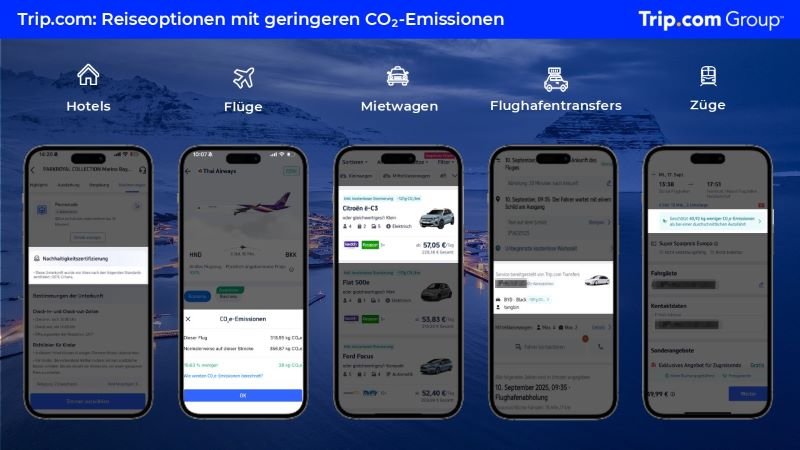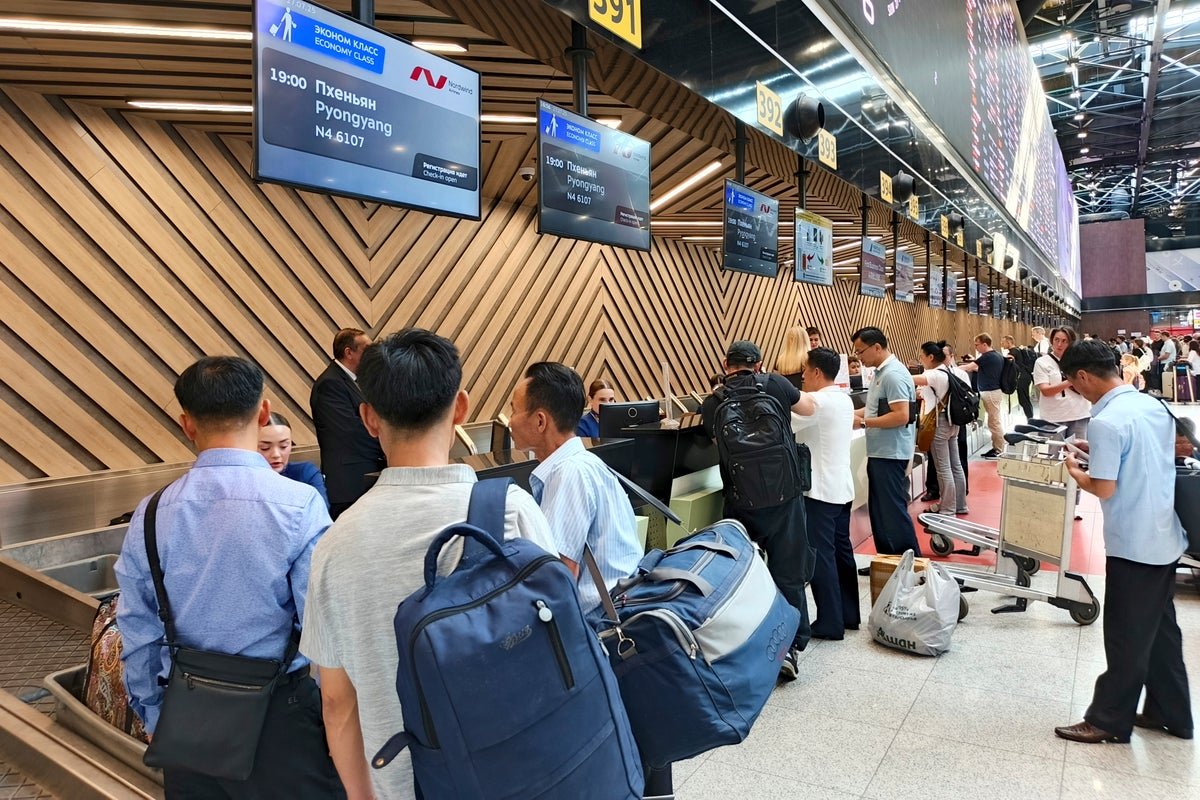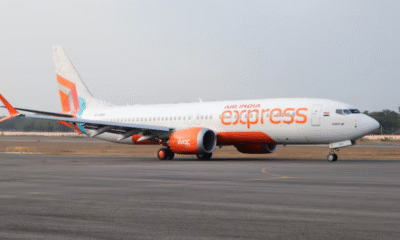Flight Buzz
Rs 96,000 crore invested to strengthen India’s aviation sector in last 5 years: Minister

New Delhi, July 24 (IANS) The Airports Authority of India (AAI), along with its public-private-partnership (PPP) ventures, has incurred a cumulative capex (capital expenditure) exceeding Rs 96,000 crore during FY 2019-20 to FY 2024-25 to strengthen the country’s aviation sector, Civil Aviation Minister K. Rammohan Naidu informed the Parliament on Thursday.
At present, there are 162 operational airports, including heliports and water aerodromes, in the country. During the year 2024-25, Indian airports recorded a total passenger traffic of 412 million, including 77 million international and 335 million domestic passengers, marking a 9 per cent year-on-year growth. During this period, scheduled Indian operators operated on 835 domestic and 251 international routes, the minister said in a written reply to a question in the Lok Sabha.
Naidu also said that in 2016, the Ministry of Civil Aviation launched the Regional Connectivity Scheme-Ude Desh ka Aam Nagrik (RCS-UDAN), with the objective of enhancing regional air connectivity and making air travel more affordable for the general public and promoting regional development.
Since the commencement of the scheme, 637 RCS routes have been operationalised, connecting 92 unserved and underserved airports, including 15 heliports and two water aerodromes.
The scheme ensures affordability as the airfares on the seats on which Viability Gap Funding (VGF) is provided are capped at affordable rates, as determined by the government, the minister explained.
He further stated that modernisation and expansion of infrastructure facilities at existing airports is a continuous process undertaken by the AAI or the concerned airport operators, depending on traffic demand, commercial viability, land availability, operational requirements for aircraft safety, and demand from airlines.
The government has also formulated a Greenfield Airports (GFA) Policy, 2008 for development of new Greenfield airports in the country. As per the policy, if any airport developer, including the state government, desires to develop an airport, they are required to identify a suitable site and get the prefeasibility study conducted for construction of airport and submit a proposal to the Central government, he explained.
He also clarified that the Centre has not received any proposal seeking approval under the Greenfield Airports Policy, 2008, for the construction of a Greenfield airport at Palghar in Maharashtra or at Pachmarhi or Matkuli in Madhya Pradesh, either from the concerned state government or any airport developer.
–IANS
sps/na
Flight Buzz
Trip.com Group’s Sustainability Initiative: CO₂ Emission Data for Flights, Car Rentals And Transfers Across Global Destinations

Monday, July 28, 2025
In a major step towards sustainability in travel, the Trip.com Group, a global leader in travel services, has launched a new feature providing quantified CO₂ emissions data for essential modes of transport, including flights, car rentals, airport transfers, and trains (in Europe). This initiative spans numerous global destinations, making it easier for travelers to make environmentally conscious decisions as they book their trips worldwide.
With the introduction of this new feature, users can now access detailed information on CO₂ emissions for rental cars listed on the Trip.com platform. Thanks to collaboration with the Association of Car Rental Industry System Standards (ACRISS), the platform allows travelers to compare emissions from electric, hybrid, and conventional vehicles. This addition empowers travelers to choose eco-friendly options for their rental car needs, helping minimize their carbon footprint across various global destinations.
In addition to rental cars, the CO₂ emission data for airport transfers has been incorporated. This allows travelers to evaluate and select the most environmentally friendly transportation options for each leg of their journey, ensuring greener travel experiences at global destinations. The new feature, detailed in the latest sustainability report from Trip.com Group, also highlights significant progress in promoting eco-consciousness in the travel industry.
Trip.com Group’s Broader Commitment to Sustainability
The Trip.com Group’s sustainability efforts are broad and multifaceted, aligning with its overarching goal to become CO₂-neutral by 2050. As part of their “Friendly-Four” concept community-friendly, family-friendly, eco-friendly, and stakeholder-friendly Trip.com is intensifying its initiatives in each of these areas. The sustainability report highlights key achievements such as the company’s push to encourage over 100 million bookings for sustainable travel products in 2024, which marks a significant commitment to reducing the environmental impact of tourism.
The company also continued to integrate renewable energy into its operations. Notably, the solar panels installed at its headquarters and on the so-called “land houses” generated a clean 457 MWh of electricity in 2024. This move significantly reduced the carbon footprint associated with its business operations. In addition, the Trip.com Group has taken steps to measure and report on all Scope-3 emissions, which include indirect greenhouse gas emissions from sources like rented data centers and business travel, enhancing the company’s sustainability accountability.
Expanding the “Land House” Program for Sustainable Tourism Development
Another key area of Trip.com Group’s sustainability focus is its contribution to rural development through tourism. The company’s flagship “Land House” program has expanded to 34 locations, creating over 40,000 indirect jobs and providing substantial economic benefits to local communities. More than 80% of employees at these land houses are local residents, and the villages participating in the program have experienced an average increase of $5,500 in per capita income.
This year, the “Land House” program is set to expand further to additional global destinations, continuing its role in fostering sustainable tourism and economic development in rural regions. By combining sustainable travel with local economic empowerment, the program plays a crucial part in Trip.com Group’s strategy to create a positive environmental and social impact.
Family-Friendly Initiatives and Corporate Social Responsibility
Trip.com Group is also strengthening its position as a leading family-friendly employer. With women representing 57.1% of the global workforce, the company has made notable strides in gender equality, with 32.7% of upper and middle management roles held by women. Additionally, the company has prioritized work-life balance through its hybrid work model, which has been adopted over 630,000 times by employees to date. This initiative has saved an estimated 1.25 million commuting hours, helping employees balance their professional and personal lives more effectively.
As part of its commitment to supporting families, Trip.com Group introduced three additional days of childcare leave in April 2024. This initiative is designed to help working parents better balance their personal and professional commitments. Furthermore, the company’s childcare subsidy program, introduced in 2023, has already provided financial support for over 900 children, with more than $468,000 distributed in 2024 alone.
Corporate Governance and Future Commitment to Sustainability
The Trip.com Group has also made significant advancements in corporate governance, earning an “A” rating from MSCI ESG. This rating reflects the company’s efforts to enhance transparency and foster sustainable practices across its operations. The company’s strong focus on responsible corporate practices and its ongoing partnerships with more than 230 destination marketing organizations highlight its commitment to promoting inclusive tourism development.
Trip.com Group’s sustainability strategy continues to evolve, with a clear emphasis on long-term commitment to environmental, social, and governance (ESG) principles. By offering travelers access to CO₂ emissions data for key transport modes, expanding rural tourism programs, and strengthening its family-friendly policies, the company is working to ensure that sustainable travel is both accessible and impactful across global destinations.
The company’s continued focus on these efforts underscores the growing importance of sustainability in the travel industry and positions the Trip.com Group as a key player in shaping a greener, more inclusive future for tourism worldwide.
Flight Buzz
Asiana Airlines Slashes Flights Between South Korea and United States for Winter 2025 – What You Should Know Now

Sunday, July 27, 2025
Asiana Airlines (OZ) will reduce frequencies of flights between South Korea and the United States for the winter 2025 season. The cutbacks, which primarily affect service to San Francisco and Seattle, are part of the airline’s push to better deploy its fleet and improve its operations.
The biggest cut will be for the Seoul–San Francisco (SFO) line, with the airline bringing down capacity by half. Over the period November 2025 to December 2025, Asiana’s schedule will see 5 flights a week between Seoul Incheon International Airport and San Francisco. Flights to Seattle-Tacoma International Airport (SEA) will also be reduced by 20% in September and October 2025.
Reduced Transpacific Services
Asiana Airlines has long been a key player in transpacific air travel, with well-established routes connecting Seoul to major U.S. cities. The ICN–SFO route, in operation since the early 1990s, is currently served by the Airbus A350-900, which offers 311 seats across three classes.
For winter 2025 the airline will offer only five flights a week between Seoul and San Francisco, flying 4,917 nautical miles (9,106 km) taking 11 hours approximately. This loss is symptomatic of broader shifts in the airline’s transpacific approach. Other airlines on the route are Korean Air, United Airlines and Air Premia.
Asiana‘s ICN–SEA meanwhile will drop from seven to five weekly for September and October 2025. The Boeing 777-200ER is commonly used for these international flights, with the capacity to seat 300 passengers, in two classes. The journey spans 4,533 nautical miles (8,394 km) and lasts approximately 10.5 hours.
Fleet and Competitive Landscape
Asiana Airlines operates a fleet of 15 Airbus A350-900s, with a further 15 on order. The Dreamliners are deployed on long-haul routes and have a configuration of 28 business class, 36 premium economy and 247 economy seats. Asiana operates 22 business class and 278 economy seats on the Seattle route, which it says represents its smallest long-haul aircraft, among the nine used for the route alongside other destinations.
Even with such cuts, the routes are competitive. Korean Air, Delta Air Lines and Air Premia also have flights between South Korea and the U.S. West Coast. Alaska Airlines will also launch nonstop service between Seattle and Seoul in September 2025 in collaboration with Hawaiian Airlines to make the competition fiercer.
The Korean Air–Asiana Merger
The flight reductions are being done in parallel with the continued combination of Asiana Airlines and state-controlled Korean Air, a tie-up approved by the South Korean government in 2020. In December 2024, Korean Air purchased a controlling stake in Asiana and became a subsidiary. It is anticipated that the combination will be fully effective by December 2026.
They expect that project will allow for the reduction of 22 flights, including Seoul- Ho Chi-Minh City, Seoul -Jakarta and Seoul-Istanbul. The two carriers currently have large hubs in Seoul Incheon International Airport and the merger is designed to increase efficiency and enhance competitiveness. Korean Air has promised not to lay off any staff during the integration.
Impact on U.S.–South Korea Travel
The service reductions suggest a change of strategy at Asiana in transpacific flying, possibly due to efforts to right-size its fleet or reorganize its network. Although the cuts may reduce choices for passengers in the short term, the goal in the long term is to operate more efficiently.
Passengers traveling to or from the U.S. and South Korea will want to stay aware of these developments, with more schedule changes, fleet shifts and market dynamics inevitable as the Korean Air-Asiana integration unfolds. The changing landscape will alter the U.S.-South Korea air travel game for years to come.
Flight Buzz
First direct commercial flight launched between Russia and North Korea

Russia has inaugurated a new regular air service between Moscow and Pyongyang, a development underscoring the deepening relationship between the two nations.
The inaugural flight, operated by Russian carrier Nordwind, departed Moscow’s Sheremetyevo airport on Sunday with more than 400 passengers aboard. Russia’s Transport Ministry confirmed plans for one monthly flight to accommodate demand.
Russian Foreign Minister Sergey Lavrov, who visited North Korea‘s new Wonsan-Kalma beach resort earlier this month to meet with North Korean leader Kim Jong Un, promised to encourage Russian tourists to visit the complex.
The resort, which can accommodate nearly 20,000 people, is at the center of Kim’s push to boost tourism to improve his country’s troubled economy.
North Korea has been slowly easing the curbs imposed during the pandemic and reopening its borders in phases. But the country hasn’t said if it would fully resume international tourism.
Regular flights between Russia’s eastern port city of Vladivostok and Pyongyang reopened in 2023 following a break caused by the coronavirus pandemic.
Russia and North Korea have sharply expanded military and other ties in recent years, with Pyongyang supplying weapons and troops to back Russia’s military action in Ukraine.
-

 Brand Stories6 days ago
Brand Stories6 days agoBloom Hotels: A Modern Vision of Hospitality Redefining Travel
-

 Brand Stories2 days ago
Brand Stories2 days agoCheQin.ai sets a new standard for hotel booking with its AI capabilities: empowering travellers to bargain, choose the best, and book with clarity.
-

 Destinations & Things To Do1 week ago
Destinations & Things To Do1 week agoUntouched Destinations: Stunning Hidden Gems You Must Visit
-

 AI in Travel1 week ago
AI in Travel1 week agoAI Travel Revolution: Must-Have Guide to the Best Experience
-

 Brand Stories3 weeks ago
Brand Stories3 weeks agoVoice AI Startup ElevenLabs Plans to Add Hubs Around the World
-

 Brand Stories2 weeks ago
Brand Stories2 weeks agoHow Elon Musk’s rogue Grok chatbot became a cautionary AI tale
-

 Destinations & Things To Do1 day ago
Destinations & Things To Do1 day agoThis Hidden Beach in India Glows at Night-But Only in One Secret Season
-

 Asia Travel Pulse3 weeks ago
Asia Travel Pulse3 weeks agoLooking For Adventure In Asia? Here Are 7 Epic Destinations You Need To Experience At Least Once – Zee News
-

 AI in Travel3 weeks ago
AI in Travel3 weeks ago‘Will AI take my job?’ A trip to a Beijing fortune-telling bar to see what lies ahead | China
-

 Brand Stories3 weeks ago
Brand Stories3 weeks agoChatGPT — the last of the great romantics













You must be logged in to post a comment Login